Planetary Classifications
Created by Captain Benjamin Byrne on Wed Jun 22nd, 2011 @ 7:46pm
Planetary Classification |
||
|
A planet is a celestial body in orbit around a star or stellar remnants, that has sufficient mass for self-gravity and is nearly spherical in shape. A planet must not share its orbital region with other bodies of significant size (except for its own satellites), and must be below the threshold for thermonuclear fusion of deuterium. If a celestial body meets those requirements, it is considered a planet; at that point, the planet is further classified by its atmosphere and surface conditions into one of twenty-two categories. |
| Class A - Geothermal |
||
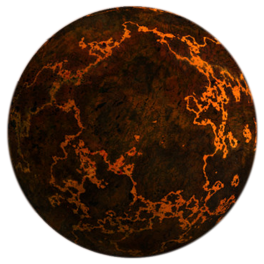 |
AGE: 0-2 billion years old DIAMETER: 1,000 - 10,000 km LOCATION: Hot Zone/Ecosphere/ Cold Zone SUFRACE: Partially molten, very hot ATMOSPHERE: Carbon dioxide, hydrogen EVOLUTION: Cools to become Class C LIFE FORMS: None EXAMPLES: Gothos |
|
| Class B - Geomorteus |
||
AGE: 0-10 billion years old DIAMETER: 1,000 - 10,000 km LOCATION: Hot Zone SUFRACE: Partially molten ATMOSPHERE: Extremely tenuous EVOLUTION: N/A LIFE FORMS: None EXAMPLES: Mercury, Nebhilum |
|
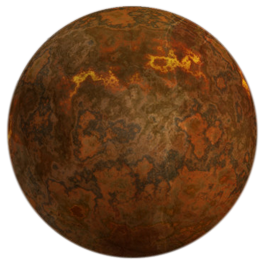 |
| Class C - Geoinactive |
||
 |
AGE: 2-10 billion years old DIAMETER: 1,000 - 10,000 km LOCATION: Hot Zone/Ecosphere/ Cold Zone SUFRACE: Barren ATMOSPHERE: None EVOLUTION: N/A LIFE FORMS: None EXAMPLES: Psi 2000 |
|
| Class D - Dwarf |
||
AGE: 2-10 billion years old DIAMETER: 100 - 4,000 km LOCATION: Hot Zone/Ecosphere/ Cold Zone SUFRACE: Barren and cratered ATMOSPHERE: None or very tenuous EVOLUTION: N/A LIFE FORMS: None EXAMPLES: Pluto, Ceres, Eredas-Il |
|
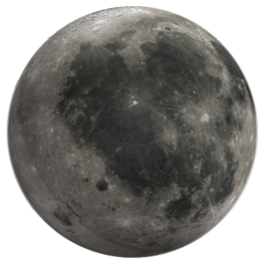 |
| Class E - Geoplastic |
||
 |
AGE: 0-2 billion years old DIAMETER: 10,000 - 15,000 km LOCATION: Ecosphere SUFRACE: Molten, high surface temp. ATMOSPHERE: Hydrogen compounds EVOLUTION: Cools to become Class F LIFE FORMS: Carbon cycle EXAMPLES: Excalbia |
|
| Class F - Geometallic |
||
AGE: 1-3 billion years old DIAMETER: 10,000 - 15,000 km LOCATION: Ecosphere SUFRACE: Volcanic, barren ATMOSPHERE: Carbon dioxide, ammonia, methane EVOLUTION: Cools to become Class G LIFE FORMS: Bacteria EXAMPLES: Janus IV |
|
 |
| Class G - Geocrystalline |
||
 |
AGE: 3-4 billion years old DIAMETER: 10,000 - 15,000 km LOCATION: Ecosphere SUFRACE: Rocky, mostly barren ATMOSPHERE: Carbon dioxide, oxygen, nitrogen EVOLUTION: Cools to Class H, K, L, M, N, O, P LIFE FORMS: Vegetation, simple organisms EXAMPLES: Delta Vega |
|
| Class H - Desert |
||
AGE: 4-10 billion years old DIAMETER: 8,000 - 15,000 km LOCATION: Ecosphere SUFRACE: Hot, arid; less than 20% surface water ATMOSPHERE: Oxygen, nitrogen, argon, metals EVOLUTION: N/A LIFE FORMS: Drought-resistant plants/animals EXAMPLES: Dimovius, Nimbus III, Corneria, Ocampa |
|
 |
| Class I - Ice Giant (Uranian) |
||
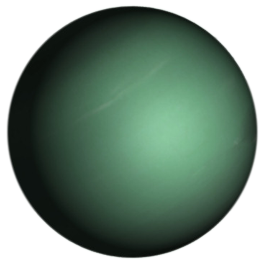 |
AGE: 2-10 billion years old DIAMETER: 30,000 - 100,000 km LOCATION: Cold Zone SUFRACE: Rock, ice, methane, ammonia ATMOSPHERE: Hydrogen, helium EVOLUTION: N/A LIFE FORMS: None EXAMPLES: Uranus, Neptune, Q`tahL |
|
| Class J - Gas Giant (Jovian) |
||
AGE: 2-10 billion years old DIAMETER: 50,000 - 500,000 km LOCATION: Cold Zone SUFRACE: Liquid metallic hydrogen ATMOSPHERE: Hydrogen, helium EVOLUTION: N/A LIFE FORMS: None EXAMPLES: Jupiter, Saturn |
|
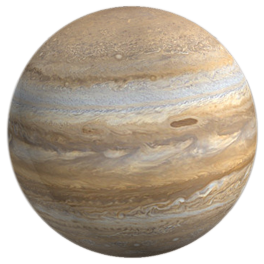 |
| Class K - Adaptable |
||
 |
AGE: 4-10 billion years old DIAMETER: 5,000 - 10,000 km LOCATION: Ecosphere SUFRACE: Barren, little surface water ATMOSPHERE: Thin, mostly carbon dioxide EVOLUTION: N/A LIFE FORMS: Primitive single-cell organisms EXAMPLES: Mars, Mudd |
|
| Class L - Marginal |
||
AGE: 4-10 billion years DIAMETER: 10,000 - 15,000 km LOCATION: Ecosphere SUFRACE: Rocky; little surface water ATMOSPHERE: Argon, oxygen, trace elements EVOLUTION: N/A LIFE FORMS: Limited to vegetation EXAMPLES: Alarin III, Ciden II, Indri VII |
|
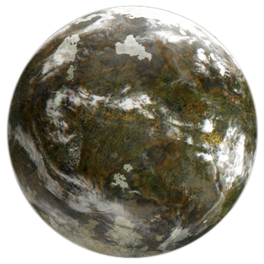 |
| Class M - Terrestrial |
||
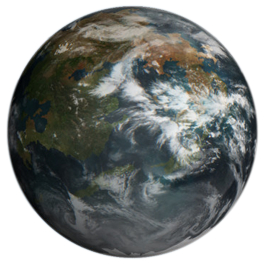 |
AGE: DIAMETER: 10,000 - 15,000 km LOCATION: Ecosphere SUFRACE: Abundant surface water; temperate climate ATMOSPHERE: Nitrogen, oxygen, argon EVOLUTION: N/A LIFE FORMS: Vegetation, animal & humanoid EXAMPLES: Earth, Cardassia, Kalidar, Vulcan |
|
| Class N - Reducing |
||
AGE: 3-10 billion years DIAMETER: 10,000 - 15,000 km LOCATION: Ecosphere SUFRACE: Barren; high temperatures ATMOSPHERE: Carbon dioxide and sulfides EVOLUTION: N/A LIFE FORMS: None EXAMPLES: Venus |
|
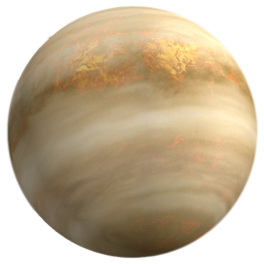 |
| Class O - Pelagic |
||
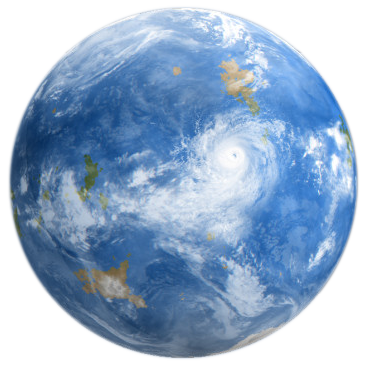 |
AGE: 3-10 billion years DIAMETER: 10,000 - 15,000 km LOCATION: Ecosphere SUFRACE: 80% water, archipelagos ATMOSPHERE: Nitrogen, oxygen, argon EVOLUTION: N/A LIFE FORMS: Cetacean, humanoid, animal EXAMPLES: Azati Prime, Ka`Tula Prime, Zirat |
|
| Class P - Glaciated |
||
AGE: 3-10 billion years DIAMETER: 10,000 - 15,000 km LOCATION: Ecosphere SUFRACE: 80% frozen water, cold ATMOSPHERE: Nitrogen, oxygen EVOLUTION: N/A LIFE FORMS: Vegetation, animal, & humanoid EXAMPLES: Andoria, Exo III, Rebena Te Ra, Rura Penthe |
|
 |
| Class Q - Variable |
||
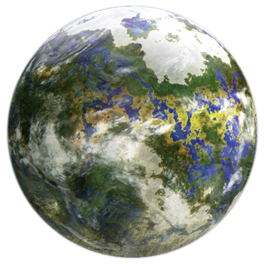 |
AGE: 2-10 billion years DIAMETER: 4,000 - 15,000 km LOCATION: Hot Zone/Ecosphere/ Cold Zone SUFRACE: Molten, frozen, jungle, etc ATMOSPHERE: Very tenuous to very dense EVOLUTION: N/A LIFE FORMS: None EXAMPLES: Genesis Planet |
|
| Class R - Rogue |
||
AGE: 2-10 billion years DIAMETER: 4,000 - 15,000 km LOCATION: Interstellar space SUFRACE: Temperate ATMOSPHERE: Primarily volcanic outgassing EVOLUTION: N/A LIFE FORMS: Non-photosynthtic plants, animals EXAMPLES: Dakala, Beneihm, Founders' Homeworld (prior to 2371) |
|
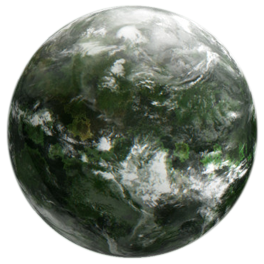 |
| Class S - Gas Supergiant |
||
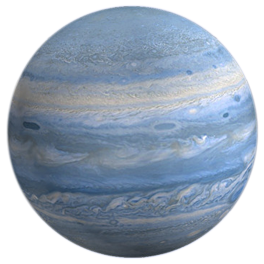 |
AGE: 2-10 billion years DIAMETER: 500,000 - 100,000,000 km LOCATION: Cold Zone SUFRACE: Liquid metallic hydrogen ATMOSPHERE: Hydrogen and helium EVOLUTION: N/A LIFE FORMS: None EXAMPLES: Tethe-Alla IV |
|
| Class T - Gas Ultragiant |
||
AGE: 2-10 billion years DIAMETER: 50,000,000 - 120,000,000 km LOCATION: Hot Zone/Cold Zone SUFRACE: Liquid hydrogen, deuterium ATMOSPHERE: Hydrogen and helium EVOLUTION: Can evolve into red dwarf stars LIFE FORMS: None EXAMPLES: Diadem, Tethe-Alla V |
|
 |
| Class X - Chthonian |
||
 |
AGE: 2-10 billion years DIAMETER: 1,000 - 10,000 km LOCATION: Hot Zone SUFRACE: Barren, extremely hot ATMOSPHERE: None EVOLUTION: N/A LIFE FORMS: None EXAMPLES: Osirus |
|
| Class Y - Demon |
||
AGE: 2-10 billion years DIAMETER: 10,000 - 15,000 km LOCATION: Hot Zone SUFRACE: Barren; extremely hot ATMOSPHERE: Turbulent, with toxic radiation EVOLUTION: N/A LIFE FORMS: Mimetic EXAMPLES: Planet Hell (Delta Quadrant) |
|
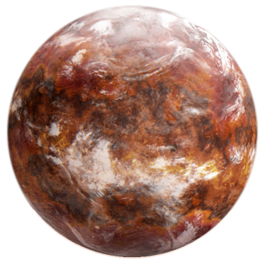 |
Categories: Stellar Cartography
